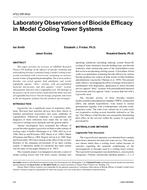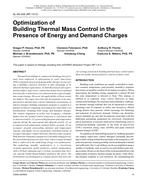The airborne route of transmission has long been considered as being of only limited importance in the epidemiology of nosocomial infection. Despite accumulating evidence that significant nosocomial pathogens such as Staphylococcus aureus are transmitted in this manner, there is much skepticism about the overall contribution of airborne microorganisms to nosocomial infection. This skepticism reflects the lack of data on the airborne microflora in hospitals—a topic that has received scant attention in recent years. This paper presents the results of a short study undertaken in a respiratory medicine ward at St James’s University Hospital, Leeds, in the United Kingdom. The study found Acinetobacter spp., Haemophilus spp., and Moraxella spp. in the ward air, as well as Streptococcus spp. and Staphylococcus spp. Over 50% of all the microorganisms isolated during the study were found in the high dependency area of the ward.
Paper from IAQ 2004 — Critical Operations: Supporting the Healing Environment Through IAQ Performance Standards
Units: SI
Citation: IAQ Conference: IAQ 2004
Product Details
- Published:
- 2004
- Number of Pages:
- 7
- File Size:
- 1 file , 260 KB
- Product Code(s):
- D-22547


